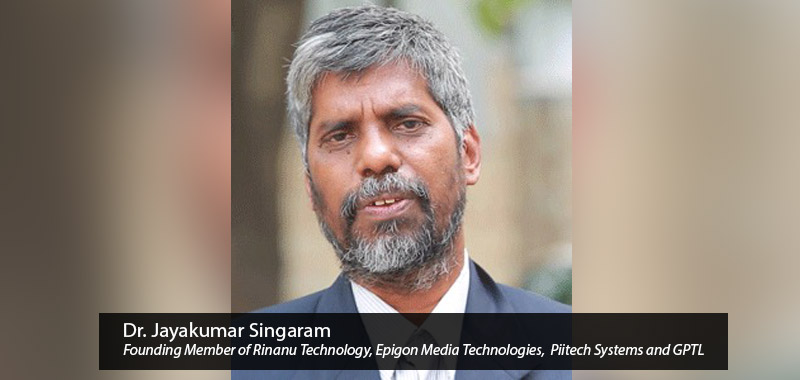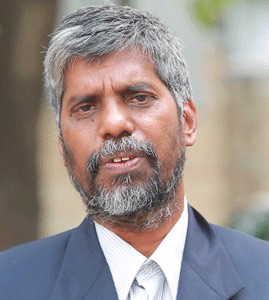
Application created to grade tomato quality. Tomatoes must be assessed before they are submitted to distribution outlets. For example, Sandwich grade Tomato requires, “high water content and also zero spots in defection on its skin”. This is because uncooked tomato is used in sandwich and human beings are subjected to eat uncooked tomato along with sandwich. Thus the safety of human health is important. The agriculture sector brings up major challenges in handling workflow to monitor the health of growing crops. Most workers look at crop growth on a daily basis and make a decision on “to apply pesticide or not”. If there is a delay in applying pesticides then the crop will not yield good harvest. Labour cost per day increased and also not many young people have the inclination to take up work on a farm on a daily wage basis. Added to this, there is a need to have the capital to train these workforces and deploy them in the field. All these added up to the level in which farmland owners get nervous to go in for short term crops such as potato, tomato, wheat, etc.
IBM Watson Studio based Visual Recognition service is used to build an application that can be a Digital Assistant to Agriculture workforce in the Agriculture industry. In case, if this is expected to work locally then it is required to have a local deployment of infrastructure (Visual Insights) for Visual Intelligence Service. Leveraging automation to enhance agriculture workers’ productivity, identifying crop disease and acting on insights faster with machine learning optimization. This will lead sustained output from harvest and also provide relief to agriculture farm owners to manage cash flow well. Deploy AI-based applications in agriculture farms in large scale by using on-premise inference ability in the form of mobile applications or web applications. In this direction, IBM cognitive computing (visual insights) infrastructure appears to be the best fit to deliver high-performance computing requirements.
Deployment companies can customize inference applications for smartphones. Tomato packing line workers use visual intelligence micro web service to become part of the workflow to monitor and deliver good quality tomato.

During monitoring, workers can be efficient by using “customized visual insights application service” as a digital assistant to check the quality of tomato.
Cost per diagnosis is a critical parameter and the complexity of workflow to perform diagnosis is another parameter. “Customized visual insights application service” is addressing both these parameters by using IBM Watson IoT platform to reduce complexity in workflow and visual recognition platform to reduce cost per diagnosis. Innovation in creating optimal yet robust models by using deep learning convolutional neural networks has led to low cost “customized visual insights application service”. For example, Agri workers start diagnosis work and get results within 2 to 3 minutes by using a smartphone app with a few clicks (sub 5 clicks). Also cost per diagnosis is 5 Rs. Workflow complexity for diagnosis is removed and this is brought down to few clicks in the smartphone applications.
Tomato crop monitoring requires sensor deployment in the tomato field. These sensors (IoT Node) are used to record data (for example, humidity, wind speed, rain level, sunlight intensity, soil moisture, etc) and send recorded data to IoT Edge. Intelligence deployed in IoT edge to understand incoming data from sensors by using AI and send classification or prediction results to the Watson IoT platform.
The application deployed in Edge works as an MQTT client device and provides the following two services
The Pub-Sub model-based “Application deployed in edge” provides the latest information on Crop health to agriculture workers and also to those in the subscription list. IBM Watson provides MQTT broker platform to manage MQTT clients that are deployed in IoT nodes, IoT edge, applications in IBM cloud, and user access devices such as smartphone, Desktop PC, etc. For example, applications in IoT sensors and IoT edge are working in asynchronous mode. In this case, there is a need to have a broker to handle data collection from IoT nodes or from IoT edge to both. “Application deployed in edge” is designed to work with IoT nodes or IoT edges that are connected via GPRS or 2G Modem or 4G Modem. “Application deployed in Edge” is working as a micro service to manage title based Pub-Sub message handling service. IoT nodes and IoT edges are not required to have global IP addresses to use the above-mentioned service. It is expected that IoT Node devices in the field may not have good hardware and software infrastructure to have clients that are based on Rest API, XMPP etc. “Application deployed in edge” is supporting text string, number string, and JPG data.
Sensor network deployed in the tomato field. Optionally, sensor nodes can be connected directly to the Watson IoT platform by using MQTT client in senor. But this is not recommended because sensor nodes need to have a good amount of hardware infrastructure to make the above to happen. It appears that the optimal way is to deploy IoT edges in the field and connect with IoT Nodes (sensors). In this process, the amount of investment required for an IoT Node (sensor) network will be optimal. IoT Edge will have MQTT clients and edge will be connected with Watson IoT platform as well by using 4G network or by using internet connectivity infrastructure in a given Tomato Field.
“Application deployed in Edge” is a limited capability MQTT broker and it is used to include all those Nodes and edges that are part of a 2g/3g network. Mostly it provides customized service to each node, each Edge, Agri workers, tomato traders, tomato buyers and farm owners. Web service and smartphone app services are deployed in ibmcloud.

IBM Watson AI component used to provide Machine Learning and Deep learning capability to Web application and mobile application service. The mentioned service is deployed by using containers (for example Docker). For long term benefit to farm owners, it is recommended to have an on-premise mini cloud platform such that monthly expenditure cut down in communication and also, farm owner can derive advantage by having near real-time service for the above mentioned personas.
“Create a real-time stream of sensor data and receive control data for the Agriculture fields with MQTT and Kubernetes” This is meant to build the required product technical prototype and will show how to turn open data into an open event stream with MQTT and microservices on Kubernetes. MQTT is a lightweight messaging protocol which is useful in situations of low network bandwidth.
Featured Technologies
Workflow with Major Tool Chain

The user (farm owner. Agri worker, Tomato Sales shop, Tomato buyer) accesses the website to get to know the tomato field. The purpose of each person might be different, though data is the same for all. Web browsers directly access the MQTT service. Edge native application polls the agriculture field every minute looking for new data. Data is pushed to MQTT Broker. The archiver is subscribed to the MQTT service and sends all new data to the database. On any new data, it computes the current state of the tomato crop in a given field and publishes both.
 Dr. Jayakumar Singaram is a founding member of Rinanu Semiconductors, Epigon Media Technologies, PiiTech Systems and GPTL. Dr. Jayakumar is also an alumnus of IIT Bombay and has been on the forefront of the emerging trends in embedded systems and IOT, having worked with organizations like HAL (Helicopter Design Bureau), Cranes InfoTech, Mistral Solutions and Essel Utilities and some significant others over a career spanning across two decades. He has worked on key projects such as design and development of the Karaoke Machine (a project in collaboration with Analog Devices and MIT Media Lab) for TAITO Corp. He also worked on Satellite Radio Receiver for WorldSpace broadcast Satellites (and DAB Radio Receivers), using low-cost Digital Signal Processors.
Dr. Jayakumar Singaram is a founding member of Rinanu Semiconductors, Epigon Media Technologies, PiiTech Systems and GPTL. Dr. Jayakumar is also an alumnus of IIT Bombay and has been on the forefront of the emerging trends in embedded systems and IOT, having worked with organizations like HAL (Helicopter Design Bureau), Cranes InfoTech, Mistral Solutions and Essel Utilities and some significant others over a career spanning across two decades. He has worked on key projects such as design and development of the Karaoke Machine (a project in collaboration with Analog Devices and MIT Media Lab) for TAITO Corp. He also worked on Satellite Radio Receiver for WorldSpace broadcast Satellites (and DAB Radio Receivers), using low-cost Digital Signal Processors.